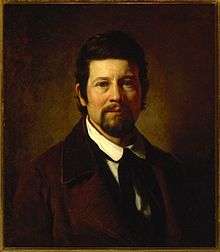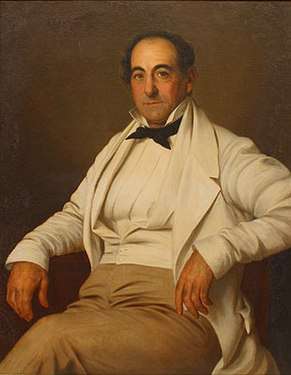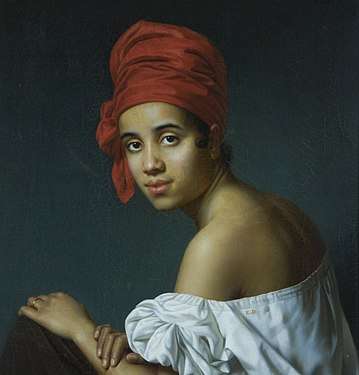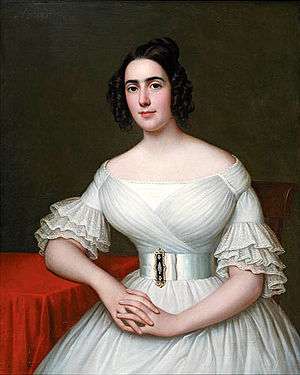Jacques Amans
Jacques Guillaume Lucien Amans (1801–1888) was a French neoclassical portrait painter working in New Orleans in the 1840s and 1850s.[1]

Amans was born in Maastricht, a French city at the time. His father, Paul Serge Amans, was born in Narbonne (F) in 1765, was a French officer (Capitaine-Adjudant de place de 1ère classe à Maastricht) of Napoléon. Jacques Guillaume Lucien Amans was trained in the French neoclassical tradition of portraiture. He exhibited at the Paris Salon from 1831 to 1837. News of fellow-artist Jean Joseph Vaudechamp’s good fortune in finding patrons probably led Amans to visit Louisiana since the two artists traveled on the same ship from France to New Orleans in about 1837. Following Vaudechamp’s departure from Louisiana in 1839, Amans assumed the role as the most celebrated portraitist in Louisiana. In the mid-1840s he married Azoline Landreaux, the daughter of a St. Charles Parish sugar planter Pierre Honoré Landreaux and Joséphine Armant, and purchased Trinity Plantation on Bayou Lafourche. Amans and Azoline moved back to France in 1856 where he died in 1888, château de Lévis Saint Nom (78), never having returned to Louisiana.[1]
Work
Clara Mazureau, whose portrait Amans painted when she was a young girl, was the daughter of Aimée Grima and Étienne Mazureau, Attorney General of Louisiana. Amans completed the portraits of several members of the Grima and Mazureau families in the 1840s. As in the Clara Mazureau portrait, Amans- favored the three quarter length pose.[2]
Influenced by the French neoclassical artists Jean Auguste Dominique Ingres and Jacques-Louis David, Amans emphasized meticulous draftsmanship and realism with particular attention to the sitter’s face and hands.
Famous subjects
Among Amans' most famous subjects was President Andrew Jackson, who sat for his portrait in 1840 (the 25th Anniversary of the Battle of New Orleans). The painting is rich in details of both physiognomy and surroundings, and shows an elderly, though not frail, former president.
Gallery
 Portrait of Michel Douradou Bringier (1843)
Portrait of Michel Douradou Bringier (1843) portrait of a Creole woman in a red tignon (c.1840)
portrait of a Creole woman in a red tignon (c.1840) Portrait of Mrs. Gustave Miltenberger (née Corinne Knott) (1840)
Portrait of Mrs. Gustave Miltenberger (née Corinne Knott) (1840) Portrait of Andrew Jackson (1840)
Portrait of Andrew Jackson (1840) Portrait of Clara Mazureau (1838)
Portrait of Clara Mazureau (1838) Portrait of Mme Augustine Massicot Tanneret (1835)
Portrait of Mme Augustine Massicot Tanneret (1835)
References
| Wikimedia Commons has media related to Jacques Amans. |
- Gerdts, William H., Art Across America, River Cross Press (Abbeville Press), Vol II, p. 94, 1990. ISBN 978-1-55859-033-5 (flyleaf).
- Lombardi, Tara, The Great Advocate: Étienne Mazureau, accomplished attorney & statesman (1777-1849), De Novo, Vol. 7(2), Fall 2009, pp. 6-7. The article author suggests the painting of Étienne Mazureau could be Amans' or Vaudechamp's work, however, it has been noted the technical details of the painting are truer to Amans' style than Vaudechamp's.